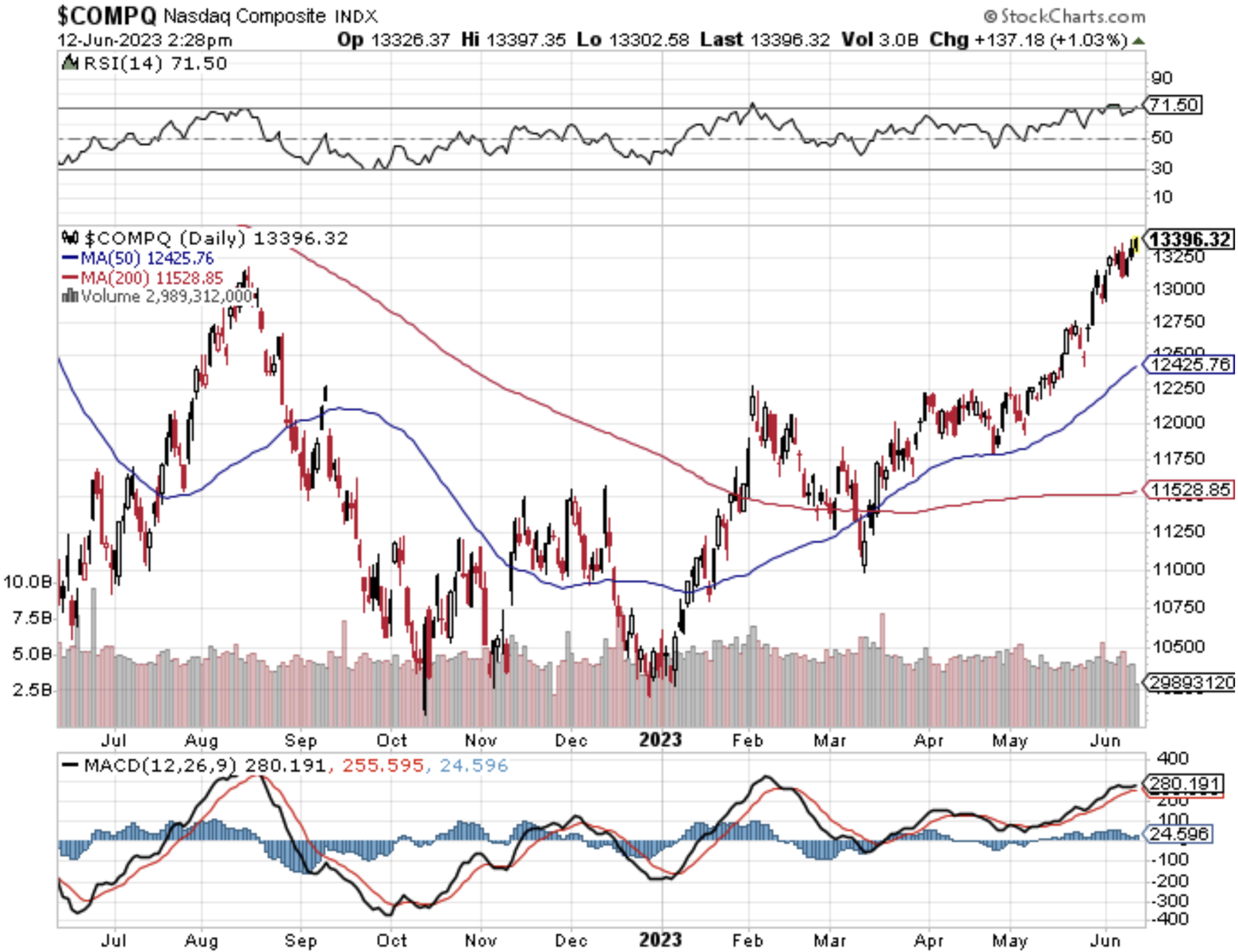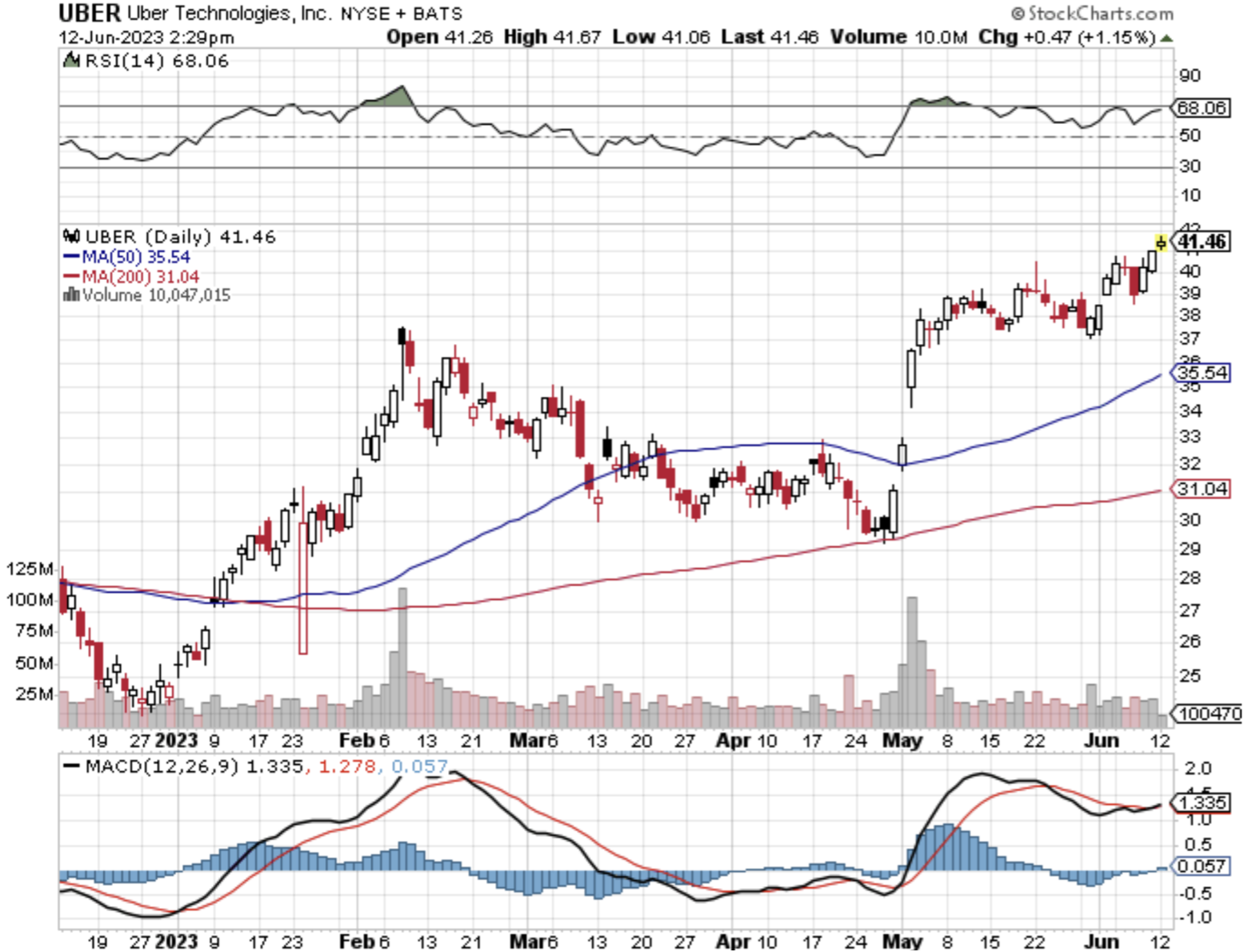Tech companies are doing well and so is the overall stock market.
It doesn’t make sense to listen to all the doomsday personalities going on national TV to scare us out of making money.
Just zone them out – they are useless.
Back in the real world, the excellent performance is great news for holders of US tech stocks who have been carrying the load in 2023.
The tech-based Nasdaq index ($COMPQ) has returned 27% YTD and anyone betting on an “earnings recession” has had their head handed to them.
Mr. Market has continued to look through any risk presented and shrugging it off like it doesn’t matter.
We have been waiting for that recession which hasn’t arrived for almost 3 years now.
People will have to continue to wait too as the job numbers have been excellent.
Instead, we should focus on why tech companies are doing so well and what makes their balance sheets tick.
In a widespread industry survey, 89% of respondents said US companies have been raising prices in excess of their own costs since the pandemic began in 2020. Almost four out of five said that tight monetary policy is the right way to tackle profit-led inflation.
The surge in corporate markups cannot be understated and tech companies have done exceptionally well with Uber (UBER) rides more costly as just one little example among many.
Margins soared in the initial pandemic years, and have defied convention by remaining historically high since then.
The unique circumstances of the pandemic – severe supply constraints, followed by an unprecedented burst of stimulus-fueled demand – lie behind the widening of profit margins, which hit 70-year highs in the US.
Even if margins come down a little because customers start to balk at high prices, the price reductions will be most likely incremental.
Standard economic theory holds that profit margins are “mean-reverting’’ – in other words, they tend to be pulled back to normal levels. It’s supposed to work like this: An industry with high profits should attract new entrants, with increased competition forcing margins lower.
However, many tech companies are operating as de-facto monopolies in their subsector and possess an unprecedented amount of pricing power for the products they sell.
This has led to the idea more colloquially known as “greedflation.’’
Until a rising backlash against monopolies or oligopolies triggers buyer protests, the tech playbook should be to buy those companies that look most similar to monopolies.
Ultimately “greedflation’’ is great for holders of tech stocks and not necessarily good for US consumers.
Clearly, there is a profit honeymoon with the likes of big tech raking in the dough.
They can even push out aggressive and abstract products like the Apple VR headset for $3,500 per clip.
That’s not a defensive strategy as well as absorbing billions to develop the product.
Coupled with the lust for anything generative AI, the conflation with higher margins has triggered a momentous rally in tech stocks.
As we narrow down our paths for the rest of the year, a demonstrative easing cycle is setting up promising to catapult tech stocks another leg up from current levels.
The considers that inflation is dropping fast from 5% to 4% and projections could find us in the 3%-ish range in the next month or two which is a strong tailwind for tech stocks.
It’s hard to see where the sellers come in and I would continue to buy every small dip in every quality tech stock name.





